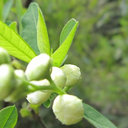Hepatology 2019-Jul
The Mutational Features of Aristolochic Acid-Induced Mouse and Human Liver Cancers.
Само регистрираните корисници можат да преведуваат статии
Пријавете се / пријавете се
Врската е зачувана во таблата со исечоци
Клучни зборови
Апстракт
APPROACH AND RESULTS
We subjected mice, including phosphatase and tensin homolog (Pten)-deficient ones, to aristolochic acid I (AAI) alone or a combination of AAI and CCl4 . Significantly, AAI exposure induced mouse liver cancers, including hepatocellular carcinoma (HCC) and combined HCC and intrahepatic cholangiocarcinoma, in a dose-dependent manner. Moreover, AAI exposure also enhanced tumorigenesis in these CCl4 -treated or Pten-deficient mice. AAI led to DNA damage and AAI-DNA adduct that could initiate liver cancers through characteristic adenine-to-thymine transversions, as indicated by comprehensive genomic analysis, which revealed recurrent mutations in Harvey rat sarcoma virus oncogene. Interestingly, an AA-associated mutational signature was mainly implicated in human liver cancers, especially from China. Moreover, we detected the AAI-DNA adduct in 25.8% (16/62) of paratumor liver tissues from randomly selected Chinese patients with HCC. Furthermore, based on phylogenetic analysis, the characteristic mutations were found in the initiating malignant clones in the AA-implicated mouse and human liver cancers where the mutations of tumor protein p53 and Janus kinase 1 were prone to be significantly enriched in the AA-affected human tumors.


